Philadelphia Fringe Diary 2025 (Updated 10/2/25)
Capsule reviews from the Philadelphia Fringe Festival

As sure as the leaves turn to Autumn gold, theatre is back in Philadelphia. This year, Philadelphia Fringe Festival is larger than ever, spanning venues far and wide across the city. Blake Weil and Edward Mylchreest have the scoop on the festival’s immersive highlights.

Nepobaby Psychodrama
Jacob Peter Kovner; $25, PWYC Available; Through Sept 10
Our current royal family doesn’t have the difficulties in breeding that pandas do, but pandas and royal persons alike are expensive to conserve and ill-adapted to any modern environment. But aren’t they interesting? Aren’t they nice to look at?
-Hilary Mantel, Royal Bodies
When the ethical question of “Should billionaires exist” rears its head in conversation, no one is typically considering whether this is a moral state for a billionaire to be in, especially in cases of inherited wealth. Yes, enviable compared to cruel deprivation, but the billionaire is, in his own way, a pathetic figure. Money has deprived them of independence, needs being met at any turn thwarting growth, until they’re merely the uncared for nexus of an economic network, their moods and desires not truly empathized with but managed much in the same way a city braces for a hurricane.
This is the central figure of Nepobaby Psychodrama, a loathable, loathsome, and deservedly self-loathing sad sack who has engaged the audience as a troupe of (well paid) actors to portray his abusive family so that he can find closure in acting out his traumas.
The proceedings quickly turn to hilarity as Kovner condescends and micromanages the audience. Members were alternately needled for being not cruel enough, too poor looking, too uneducated in their analogies and references, the threat of docking pay constantly over our heads. Yet something fascinating happens in the theater as everyone vacillates between apathy for the champagne problems of a whiny despot and empathy for the victim of actual cruelties we’re portraying.
As Kovner becomes crueler and more erratic, and the audience becomes more aware of their own capacity for cruelty with the promise of cash, the evening takes a distinctly surreal turn. Suddenly, Kovner is a drag cross between The Phantom of the Paradise and Michelle Pfeiffer as Catwoman, throwing actual bills around the theater for any audience member who will degrade themselves to engage with increasingly infantilizing and psychosexual behavior. Kovner is ultimately reduced, in ways I dare not spoil, to the most ridiculous extremes of degradation, so much Freudian goo laid bare for all to see.
The use of real money, somewhere in the ballpark of several hundred dollars, is economically baffling for a pay-what-you-can show, but artistically brilliant. Money becomes a clear corrupting force, as the audience degrades themselves in service of an already degraded individual. As bills scattered around the stage, individuals surrounding me (and myself) got on edge, ready to pounce for clearly illuminated large bills like lions on a gazelle. The fact that this is consistently funny makes it palatable; the audience itself becomes a second point of attraction, watching the varied reactions to money being dangled in front of their nose. The greatest laugh of the evening came when a member, previously thoroughly enthusiastic to receive single bills, refused to help Kovner undress for a handful of ones after a couple of twenties had been flashed.
Certainly, I left the evening feeling a little gross about myself, my soul stained by rubbing against bills as if they were poison ivy. But I could retreat back into $2.50 water ice bought on long-term credit, and the middle class dreams of a medical student. I got to leave the psychodrama; pity those who don’t.
When I was ten years old, I was rich, I was an aristocrat. Riding around in taxis, surrounded by comfort, and all I thought about was art and music. Now, I’m 36, and all I think about is money.
-Wallace Shawn, My Dinner With Andre
— Blake Weil

That Dough Tho
Mike Durkin; $25, PWYC Available; Through September 5
When I was as young as I could remember, Bertucci’s was my favorite chain restaurant, because instead of crayons they gave children balls of pizza dough to play with.
This is a good 75% of the power of “That Dough Tho”. The other 25% is good company by a fire on an early Autumn night.
Having now seen a handful of Mike Durkin productions (2022’s “Yes We’re Ready…”, 2024’s “Use Promo Code Hot Diggity Dog”, and a recent spectacular immersive lecture on Jello culture presented at a Philadelphia bookstore), I feel I finally have a read on him. While his work can sometimes be amorphous or non-specific, beleaguered by fate like the diner closure that cursed “Yes We’re Ready”, they all generally are about the warm ways food links us and builds community.
Here, he presents us with something simple. Together, we’ll all knead our own pizza dough. We’ll play with pre-risen dough while ours rises, discussing doughy memories of kitchens long gone, and sipping a wine or a beer. We’ll walk to the fire, and chit chat while our kneaded flatbreads roast and bubble and char, and dip them in oil and honey and watch the sun sink over the horizon.
The conversation that followed in my party was the usual “but is it art” that dogs so many of our experiences. If we define art as a deliberate attempt to provoke an emotion, sure it is, and I don’t feel particularly compelled to fight that.
I had a nice night in the breeze. I remembered Bertucci’s like a Proustian madeline. I took a long amble and sipped a good drink. That is enough.
— Blake Weil
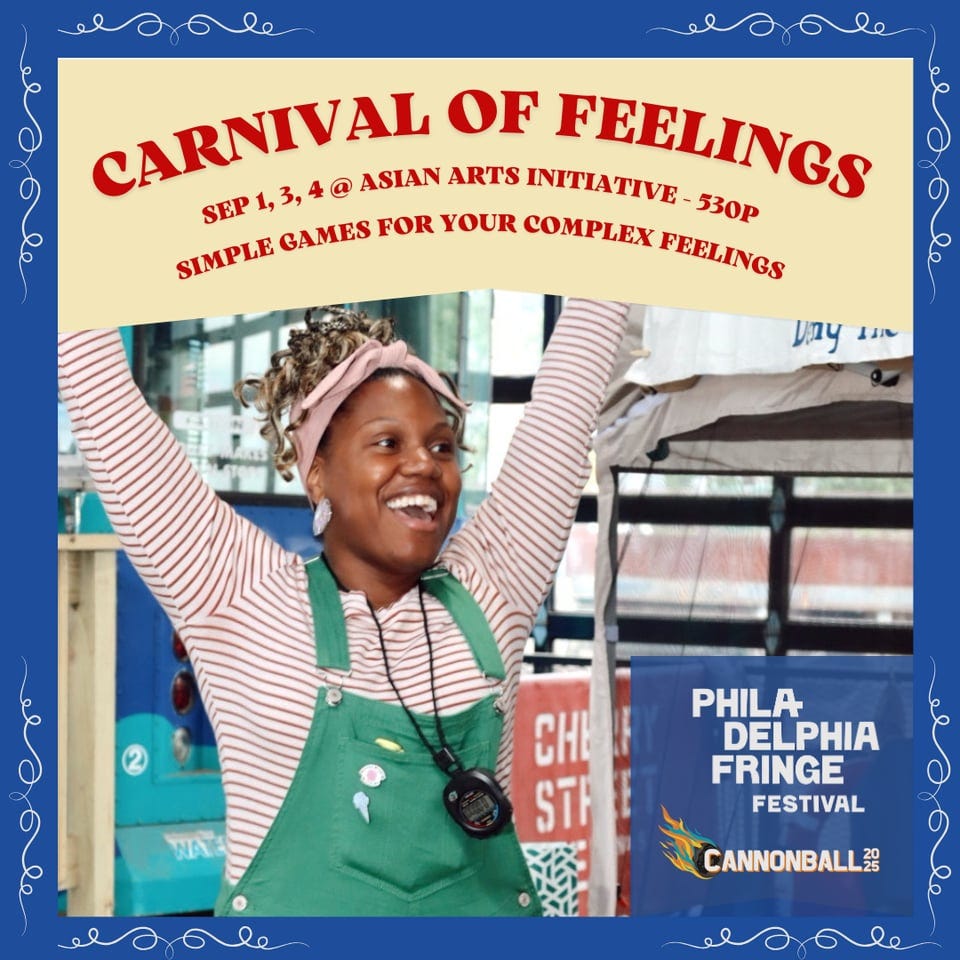
Carnival of Feelings
Stories & Makebelieve; $25, PWYC Available; Run Concluded
When I recall the feelings of a carnival, they’re myriad. Excitement on the whirling, inexpertly assembled rides, fluttering butterflies at stolen kisses on summer dates, the moody eerieness of a hall of mirrors. The central issue with Carnival of Feelings is that the emotional range at your typical fair is enabled by an abundance of space.
Far be it from me to criticize a Fringe show for not having the most space, or best budget. Carnival of Feelings is a lovely proof of concept that walks participants through the five stages of grief as if they were whimsical carnival games. We deny the inevitability of defeat in a game of keep it up, express our rage in a balloon popping game, and bargain and settle for shoddy prizes at a ball tossing game. Generally speaking, the idea of gamifying these emotions and seeing what emerges is solid, done with apt physical metaphors. Admittedly, the tone can be patronizing on occasion, but in the general Mr. Rogers for adults scheme of the performance that’s forgivable.
What made it difficult to truly connect with the work was the sense that everyone was completely on top of each other. Reflections on what you’re willing to settle for are interrupted by screams of rage and balloon pops not five feet away, separated by a curtain of thin velvet. Blaring calliope music can still be heard in “the void”, symbolizing despair (yet shockingly not a hall of warping, distorting mirrors). At the cool down “acceptance” tent, by which point the metaphor seems to have completely collapsed, many participants, myself included, were desperate for the noise dulling ear muffs to settle the overstimulation of the experience.
I would love to see Carnival of Feelings restaged, perhaps in a series of rooms or outdoor tents. The intent is lovely, and the ultimate message of identifying, respecting, and accepting our feelings as they come is sound advice. In its current curious prototype state, however, I find that my mood is less satisfied, and more hopeful.
— Blake Weil
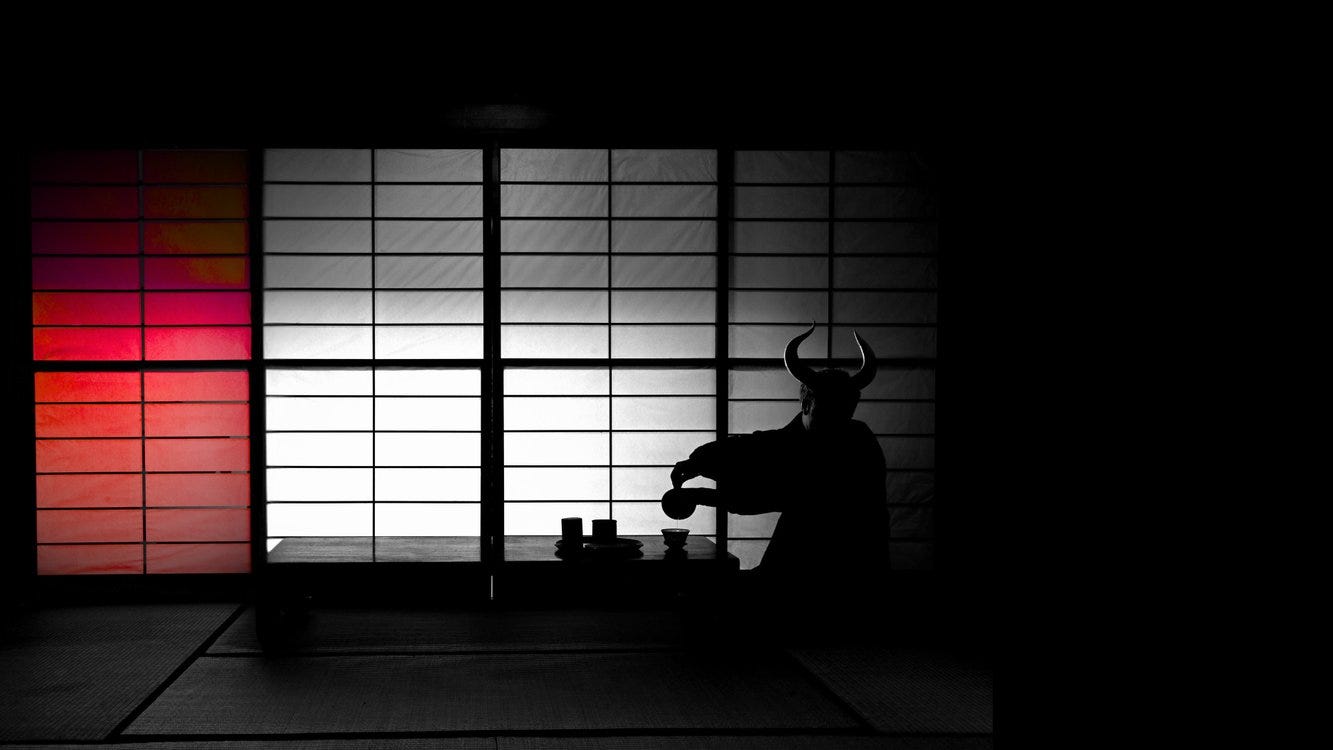
Kaidan: Night of 100 Spirits
Bucketlisters $35, PWYC Available; Run Concluded
Sometimes, leaving a dreadful performance, a friend will ask me if I’m excited that I get to write “a nasty one”. While of course, it’s fun to read and write harsh reviews like so much bathroom gossip, there’s a dreadful weight that any morally sound critic struggles with between protecting an audience from garbage and not wanting to humiliate or condemn an artist.
Where my calculus shifts in savaging a production is when it is a production of means by a corporate entity. Lavishly marketed by Bucketlisters, who claims a production credit on their website but for some reason denies it in their Fringe listing, and sponsored by big name brands like Suntory, Kaidan is an underbaked embarrassment. It seems, although impossible to prove, created as calculatingly as possible based on the way Japan sells to Western audiences, an ad blitz given life as if the Blue Fairy waved her wand.
The evening promises an immersive variety show format leading us through the hyakumonogatari, a parlor game of telling ghost stories by candle light, extinguishing a candle for each, punctuated with Victorian spiritualist magic and traditional Japanese arts.
Let’s begin with the magic. Having attended deeply immersive Victorian spiritualist inspired events, and attending Kaidan alongside a producer of theatrical seances who provided me with damning, withering glances, the piece did not attempt anything in that description. The muddled, poorly staged, and consistently flubbed magic tricks were largely often seen out of the box gimmicks. Mentalist tricks were deeply unimpressive as harried staffers had run through the audience prior to the show, shouting for people to complete surveys. Nonetheless, a miscommunication in stage management led to Schrieben the Conjurer misreading the audience’s mind despite having a visible crib sheet. While the traditional hyaku (hundred) tales traditional to the experience were deemed too ambitious, we were promised sixteen tales of terror and candles to snuff. Clearly, some were deemed utter failures in rehearsal, random numbers of candles extinguished at multiple points in the show, seemingly skipping several tricks.
Moving on to the traditional arts. Certain promised arts like bunraku puppetry completely failed to materialize. Puppeteers not being listed in the program, I doubt this was merely illness, more likely a failure to find a skilled puppeteer after enough tickets were sold on slick marketing copy. Having spent enough time in Japan as a student, and having friends in a Japanese traditional music club during my time at Tokyo’s Sophia University, I am at least familiar enough to identify the shamisen and koto music as unambitious selections played by game amateurs. One can picture the call. “I have two weeks! Where am I going to find a Philadelphia based Koto player?” Dance fared slightly better, with a practiced dancer in the nihon buyo style performing a few lovely dances, including an interpretation of my favorite Japanese ghost story, the yuki-onna, or snow woman. However, as two dance experts in our party pointed out, the butoh inspired dancers fared significantly worse. One of these, a bizarre contortion routine involving an extra long loin cloth distractingly threaded through a dance belt, ended up turning to giggle-inducing tedium as a switchboard operator seemingly fell asleep at the wheel, looping the song and forcing an improv where the front row became a splash zone whipped by the unchoreographed flailing of the loin cloth.
Criticism can’t ignore the script, though. Schrieben is positioned as a pompous Victorian spiritualist, coming to share the “mysteries of the Empire of Japan” in a clearly doomed fashion, obviously about to stumble head first into a haunting he’s unequipped for. I began the evening thinking it a clever way to square the circle of a white magician trying to perform an overall appropriative performance. This all collapsed when a second Asian magician was introduced as his mentor, coming to recover the secrets Schrieben stole from him. Not only did this render Schrieben redundant (why have a commentary on appropriation if we had a suitable magician to begin with?), but introduced bizarre and meandering narrative cul-de-sacs that felt carved from several rushed drafts. Most out of place was a recurrent, yet consistently uncommented on and uncommitted to homoeroticism, including piggyback rides, shibari bondage, and an explicit declaration that they were bound by the lover’s red string of fate (but, like, not in a gay way).
Consistent technical errors abounded. Why do the lights brighten and dim at random, disconnected from the candles? Why do the musicians not know when to leave? Are you SURE, audience volunteer, that you can’t hear the whispers from this board? A truly hilarious glitch trapped Schrieben on stage, in full light, unable to exit through a sliding door at the climactic finale.
Again, all errors are the hallmark of a rushed show not given time to gestate. I want to clarify I hold no individual performer responsible here. The cast and crew seemed truly underrehearsed, brought on too late onto a project sketched too quickly and too thin. I’m willing to lay blame squarely on an attempted cash grab, all three shows selling out way in advance. I write this as a caveat emptor to all browsers who might run into the convincing puffery of Bucketlister’s marketing team, hoping the vagaries of SEO lead it to someone waffling on whether to commit to a ticket.
Sometimes I have no regrets writing a “nasty one”.
— Blake Weil

White Room
Sepehr Pirasteh; $25, PWYC Available; Run Concluded
On the “Zoo TV” tour, Irish rock band U2 attempted a multimedia spectacle to counter their pompous image. I’m not here to critique U2, but you can judge their success for yourself, with their walls of flashing videos, and words, thousands of words, invoking endless big ideas without really saying much. “Art is manipulation”, “Religion is a club”, “BeLIEve”, “Better by Design — Toshiba”. Certainly, they were circling ideas of media and politics, the value of art, capitalism writ large, but U2 seemed mostly to shake the most general of fists at the heavens.
Enter White Room, a more personal version of a similar sort of set up. In three cubes, with videos mapped onto them, (one of nature, of one of americana, one surprisingly blank) sit string musicians. Tinny speakers whisper messages about facism, and the nature of control, and the interplay of terror and propaganda in authoritarian systems. Buttons and knobs are scattered throughout the room; buttons flip the channel, and knobs signal to the musicians to play louder, or quieter, or more/less discordant, never really finding harmony, tune, or rhythm. This is unexplained for the audience to figure out.
After a while, I found a tinny speaker, barely audible in the exhibit’s vestibule. Explicitly stated by the creator, audience members dueling over the remotes (or not) were intended to mirror the ways ruling classes clash with iconoclastic individuals.
Again, with so much Bono-esque sound and fury, the point doesn’t quite hold. While the audience is certainly afforded a modicum of control, and patterns emerge in terms of what the will of the crowd or certain individuals force, they don’t seem to mean much in the abstraction of the stimuli. Of course the audience pushed to quiet the consistently discordant soundscape. Ultimately, channel shifting ceased as none of the channels really showed substantially different things. Even when some participants were more active and others less, it seemed more driven by the drive to engage with the work than the desire to control the landscape.
Nonetheless, the show would have been an elegantly constructed metaphor in the presence of stronger content. I don’t see an absence of intent or thought, rather a failure of execution. With some revision, I could see this as a successful longer term installation. For the moment, however, it stays at the level of a curiosity.
— Blake Weil
The Waiting Room: A Clowns Bureaucratic JourneyDanielle Levsky; $30, PWYC Available; Through Sept. 30

As many readers of No Proscenium know, there’s a tension when you arrive at an immersive show. Perhaps the location is strange, like a house in an unfamiliar part of town, or a sanitized corporate space you’ve never noticed before. Maybe you’ll be asked to do something strange. Maybe there will be rules you don’t know, and you’ll stumble into a private area, everyone mad at you. Everyone here wants you to engage, but how much? If I do too much, they’re mad. If I do too little, they’re mad. Finding the goldilocks zone can be exhausting.
This is incredibly low stakes, in the grand scheme of things. A night at the theater is not much to worry about. There is a warm drink and a soft bed at home. It is uniquely strong, though, to leverage this tension as part of immersive design, as The Waiting Room: A Clown’s Bureaucratic Journey does. While much leftist art tries to make its hay out the idea of the universal struggle, rarely does it feel universal. Insisting that the specific cause celebre is representative of grander, far reaching systems is trouble because its specificity limits the ability of ideas to extend in scope. Waiting Room starts with the idea of universal struggle before drilling down.
Audiences, thrown off already by the confusing rules of immersive, find themselves in the same position as Levsky’s Toska the Clown, applying at the “Department of Processing”. Here, we’re all asked to consider what we want processed; my neighbor wants their unemployment processed, I want my student loan applications. It’s only after the increasingly surreal demands of the department, in the style of Terry Gilliam, tragicomically torment us all do we learn that Toska is here to process her immigration paperwork. By that point, her struggle is ours.
Now, the creative team can make beautifully skilled decisions to support the specific. Of particular note is the use of memories, in the form of personal items, as both liability and currency to succeed through the immigration process. Yes, you need enough of a perfect story to justify why you, above the rest of the line, deserve to be “processed”, but nothing that will make you stand out, or indicate you might not perfectly assimilate. The audience winces as Toska is forced to sell off her memories one by one for hopes of a better life, and sells theirs along with her.
When the show ends on an ambiguously bleak note, the audience has very much gone on a journey. For a genre that’s often derided as kitschy (ask anyone their opinion on “sad clowns”), the effect is anything but. A thoughtfully constructed experience and performance from start to finish, The Waiting Room stands as one of the highlights of the Philadelphia Fringe season.
— Blake Weil

94.4 WAIT FM presents The Waiting Room
Phoenix Tears Productions; $10, PWYC Available; Through Sept. 27
I mean, what are the odds of two surrealist waiting room shows? Luckily, they’re both wild successes, and couldn’t be more different in tone.
One of the pleasures of Fringe season is the opportunity to do something utterly unexplainable to your friends. “Yes, I’m going to West Philly to sit in a waiting room.” “Waiting for what?” “For its own sake…?” It’s an absurd premise that speaks for itself, and the experience fully delivers on its comic potential.
Audiences receive one paper intake form, and then are presented with a number like you might get in a deli line, and three channel, synchronized headphones like one might find at a silent disco. Channel one, a hold line. Channel two, a radio show (the titular WAIT FM). Channel three, sponsor messages. There’s a website you can go to (be sure to bring a charged phone) with more forms to fill out, and pages to navigate.
I’m loath to write any spoilers about the direction of the piece, but it will have to suffice to say that the waiting room is embedded within a fascinating and confusing mythology, hidden in the marginalia of the intake forms, website, radio show, and the physical space. Engagement is rewarded, but requires the sort of leap of faith that the sort of experienced participants attracted to such an ambiguous pitch would be best at; the vague and unhelpful Fringe listing helps self select an appropriate audience.
For fans of ARGs, surreal comedy, and the far borders of wacky Fringe nonsense, “WAIT FM” is a must-see. Consistently offbeat and funny, it’s a pleasure to see Phoenix Tears expand from their native Orlando; watch for them and run (to wait!) when they’re in your town.
— Blake Weil

Asses.Masses
Patrick Blenkarn & Milton Lim; $60, $15 Students and Industry, $2 Fringe Access; One Night Only, Now on Tour
Asses.Masses frustrates me. It’s an immensely good time, it’s carefully constructed, everyone ate their fill of delicious vegan food, and I felt like the message was consistent. Nonetheless, I feel slightly cheated by the promise of the experience.
Assess.Masses puts the audience in control of a herd of donkeys fighting to get their jobs back as automation puts them out of work. What starts as a 16-bit RPG shifts genres and gaming styles over the course of the marathon play session, following interlocking narratives including political revolution, a jail break, a coming-of-age drama, and a sci-fi fantasy allegory.
The gameplay itself is fun, and without instructions on how to share the one controller, the audience becomes the central attraction, figuring out how to share decision making capabilities, and how to stay engaged when not in the spotlight. Our audience spontaneously launched into voice acting; I had a delightful time and fully blew out my voice claiming a few characters out of the massive ensemble cast.
Issues arise with the central metaphor as the game proceeds on rails. Watching and directing a narrative about the failure of revolution due to the difficulties of organizing would seem to mirror how our failures in game were due to difficulties of organization. However, this rarely felt true or fair. Rules would alternate between unlimited retries and permanent consequences without any warning, thwarting attempts at organization or nomination of more skilled players. Beyond that, perusal of a content guide available by the creators reveals that no real changes to the story could be made by our choices, successes, or failures. If a game is a series of meaningful choices, then Asses.Masses feels more like the simulation of a game. As a story, it functions, and I can understand the need to simplify and direct narrative for a coherent story, but the lack of all but the most aesthetic variation in the story’s direction thwarts ludonarrative coherence. As mechanical gameplay began to overtake story based exploration and conversation options, opportunities for participation off of the controller diminished, and the audience began to check out. For a piece seemingly inspired by Earthbound, the fact that audience decisions even when unimportant seemed to remain unremembered felt like a massive missed opportunity.
Get Blake Weil’s stories in your inbox
Join Medium for free to get updates from this writer.
SubscribeSubscribe
Beyond that, I find myself exhausted by the overstuffed nature of the piece. Certainly, the marathon nature of the experience is part of the selling point, snacks and meals at intermission, and the need to charge to the end evoking late night marathons before the return to Blockbuster Video to return the cartridge. However, not much narratively is added by the length (extending in my case to nine whole hours), especially in such a padded story. Multiple in-game chapters, including an interminable subplot on decadence in Ass Heaven (yes, really) could be cut without sacrificing coherence of message. The story is also overstuffed with ideas that often fail to gel or coalesce; beyond the rights of the working poor, Asses attempts to juggle animal rights, automation, the tension between decadence and hard work, environmentalism, and a sudden and unexplored trans narrative for one chapter. There is no time to wrap all of this into a coherent thesis, or even a theme, other than broad gestures to the idea of universal struggle. All of this is also balanced with often funny, but consistently puerile humor, beyond just the ass puns you could expect (multiple tedious rounds of a DDR inspired sex minigame included). A fellow audience member at one point, taking on the voice of the piece, joked with me at intermission; “Do I shock you? Do I shock you?”
I may speak harshly, but the work is still interesting; merely a better art object than an experience, perhaps. Nonetheless, opinions vary; many at No Proscenium have loved it, and some have hated it beyond my mild irritation. It’s a work that demands you see it for yourself; I don’t regret my nine whole hours, even if at some level I wish they had numbered five.
— Blake Weil
We Pull The Trigger
Adam Kerbel + Performa; $25, PWC Available; Run Concluded
Over the years immersive theatre has helped me to discover a love for dance in all its forms, but I am certainly no dancer myself. I can appreciate it, and even at times review it, but actually dancing is a rarity for this brit.
We Pull the Trigger seeks to remedy that, as a freestyle movement piece, where the audience is encouraged to dance with the four very talented performers, and to become a part of the art themselves. It has naturally attracted dancers, and “dancing types” from all over Philadelphia, with all manner of style, body type and expression represented. Upon entry, a sign encourages us to take a ribbon bracelet, if we would like to dance and be interacted with, or if we prefer to observe to simply go without. Taking a big breath, I bravely take a bracelet and enter the space.
As an improv dance jam there are some very cool moments to be found, even if the tech at times is splotchy and we lose sound from time to time. Flashlights are scattered around the room, and once handed one, I got to play out a unique combination of director come lighting designer come voyeur experience. Literally, and figuratively, highlighting performers in the space felt rewarding, and a great way to “get involved” in the dance even if I didn’t quite feel like a dancer yet.
On that note, towards the end of the time together, there is a simple moment that comes from combined dance for the entire audience to engage with. Holding hands with my fellow “performers”, we form shapes and waves with our bodies, in a lovely moment of community centered choreography. I wish this moment had been encouraged earlier on in the piece, because it made me feel far more comfortable in my own skin, and made me actively want to dance more, but unfortunately this moment was basically the finale of the work.
With just a slight twist of structure, I think the team could really engage with those of us who wouldn’t consider ourselves dancers even more and help to bridge the gap in a stronger manner. A clearer onboarding process, perhaps involving some of the performers, would also have helped with the invitation to play and engage.
The title of the piece comes from an opening monologue, asking the audience who will pull the trigger, and partake in the dance, complete with a shooting action. Looking around at some discomfort in my fellow audience members, I wonder whether a different phrase could have been found, as the weight behind these words felt quite disparate to the world of joy and creation that we were being asked to partake in.
As a non-dancer, I felt awe at my fellow performers for jumping in and moving so freely and wished that perhaps I had more self-confidence to engage in the work myself better. Although it might be too much to expect a one-hour fringe show to instill a sense of worthiness and belonging in every audience member, the immersive qualities and freedom of We Pull The Trigger certainly can help start the process.
— Edward Mylechreest

Magenta Lies
Rebecca Posner; $25, PWC Available; Run Concluded
This performance seeks to explore the struggles of accepting loss, and of reaching mid-life crisis age, through looking back at an embarrassing moment as a young teenager. While I’m thankful for the experience of getting to see this well acted one woman show, which is clearly a cathartic experience for the performer, the piece is not at all immersive. Other than a moment of a volunteer being asked to play a character on stage, it is not something I could even describe as interactive. A fine, if overall unsurprising, one-woman show, but not one I can recommend to our readers.
— Edward Mylechreest

Starfish and the Weighted Blanket: A comedy thing about grief
Pauli Reese; $25, PWC Available; Run Concluded
A balloon hangs expectantly in the air, high above the stage, poised to explode. Starfish the Clown struggles to appear from behind a screen, as the iconic main titles from “2001: A Space Odyssey” ring out. He spots the balloon, and then with much surprise, the audience. After a much-beleaguered entrance, he manages to utter a phrase: “wel…come… to… my…my… place”
Over the course of the next hour, Pauli Reese brings his clowning proficiency to the fore, with slapstick comedy being utilized in Starfish’s attempts to pop the Chekhovian balloon above the stage. At times he will come out to the audience to find a “volunteer” to help with an idea of how best to find out what is inside the taunting balloon. Balls are lobbed, knitted blankets are thrown, sticks are poked, all in an attempt to explode the balloon. This is the extent of the interactivity in this traditional circus/theatre performance.
Unfortunately, for my audience at least, almost every pratfall fell, well, flat. I can’t quite pinpoint the issue, whether it be comedic timing, the relatively early time slot in the day, or perhaps the lack of young children in the audience, but aside from occasional titters, there are very few laughs in this performance. There is an interesting experiment in restraint, as Starfish seems to be restricted to only uttering variations on the phrase, “Welcome to my place”, although quite why or what this is going for I’m not sure.
In the final moments of the show, the balloon is finally popped revealing confetti on the flailing clown. As it falls, his demeanor too falls, as the goal has finally been achieved and now he is left with a mess to clean up. The lights dim, and after a polite round of applause we leave for the evening, as the clown is left to reap what he has sown. Perhaps this is the titular grief we were promised, but it is certainly a confusing end for my partner and I to discuss on the journey home.
Reese is a talented clown, and I hope with more performances he finds his timing, footing, and audience for his work — unfortunately, immersive fans are the wrong audience.
— Edward Mylechreest
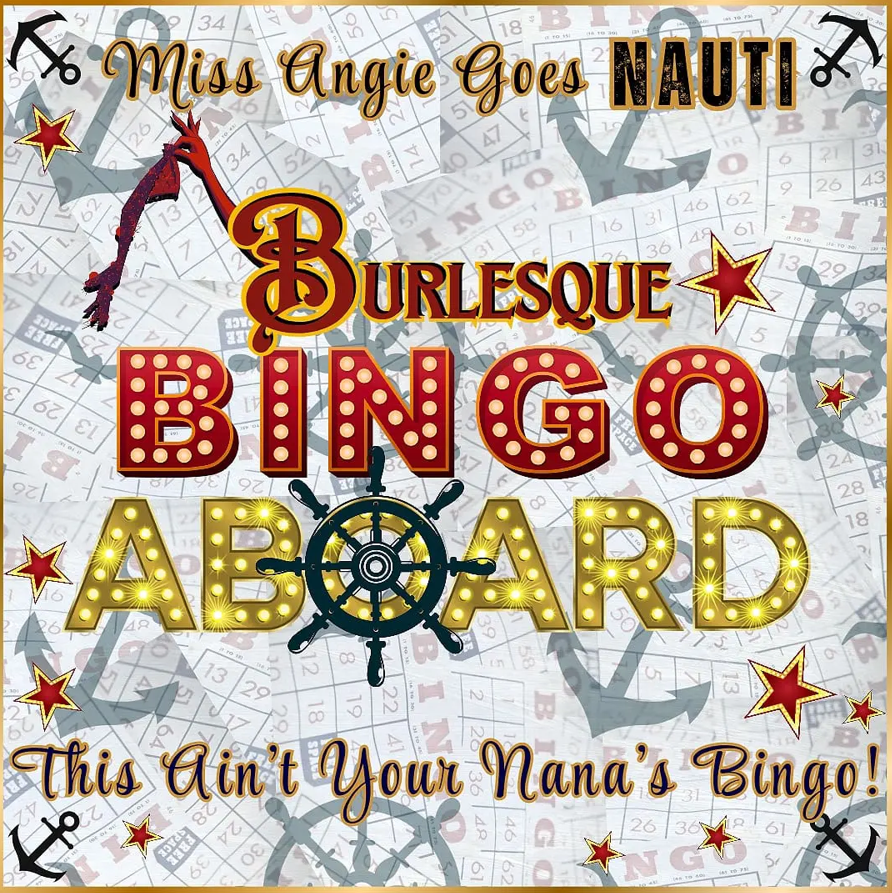
Miss Angie Goes Nauti: Burlesque Bingo Aboard
Stephanie Griffiths/Miss Angie; $30; One Night Only
A boat, a bingo board, and burlesque. What else needs to be said?
Taking place on a docked 100 year old vessel, Griffiths has concocted a surprising cocktail of experiences that worked surprisingly well. The burlesque performers were all delightful, and made the most of the unconventional performance space. That being said, I’m not entirely sure why the show needed to be on a boat, other than the fact they had access to one. Other than perhaps one or two throwaway nautical puns, there didn’t seem to be any theming needed for the setting. Most of the double entendre in the set instead focused around bingo balls, and how close we all were to finishing — don’t get me wrong, it was still hilarious, I’m just not sure why this locale. The passengers on passing ships certainly seemed to enjoy the performances!
Good laughs were had throughout the show, with hero and villain characters emerging from the moments of participation we were granted. Volunteers were called to the stage for suggestive games in much a way that could be expected at a cabaret. We found a strong sense of camaraderie and comedy as an audience which helped to patch over any of the technical issues that the show might have had, including sound issues, and strong winds making the bingo board unusable. With some fun prizes, and uniquely suggestive bingo calls, I was surprised to find how competitive bingo could be!
While not immersive, not a bad time — a unique mix of activities that left us desperate for more.
— Edward Mylechreest

Adventures at Skyline Wilderness CampFall Risk Theatre Collective; $25, PWC Available; Through Sept. 28
As a teacher who annually works out at summer camp, to walk into a loud room of ice-breakers and “getting to know you” games is quite normal — however it is quite a new sensation to feel like you’re right in the middle of camp, when all of the campers are grown adults!
Fall Risk Theatre Collective have found a way of bringing the summer camp experience to life, but for those of us who have perhaps aged out of camp. The trio of performer/writers ably portray their stereotyped camp counselor roles — the straight-laced boy scout, the determined tom-boy, and the all-natural-vegan new age type — with humor, charm, and heart. They want to make sure that we, as the new campers, have the very best time at Skyline Wilderness Camp, and their earnestness is contagious. Very quickly any cynicism that could easily have been in the room quickly dissipates, and the grown-ups around me revert back to childhood wonder in the best of ways.
The team have been able to use the space very well, with just a few strung up blankets, a makeshift camp with distinct areas is easy to get lost in. We do all the classic camp activities, forming into cabins, coming up with chants, making friendship bracelets, and writing letters home. Even water-sports… of sorts. In a highlight moment of absurdity, and “because of new state regulation and budget cuts”, we are treated to a 4D kayaking adventure, looking at a small TV screen, while our fellow campers pelt us with water, wind, and felt fish. It’s so silly, and just so delightful.
There are hints of a deeper story that begin to creep in, that unfortunately didn’t really materialize. Joey, a camper who mysteriously went missing last year, is mentioned throughout the show in hushed tones. Some interesting camp documentation is also littered around, hinting at a cryptid mystery to unravel, but perhaps these easter eggs are just temporary flavor text for now that hint at something more in the future.
As we look up at the “night sky” (a projector on the opposite wall) and we hear scary stories from our peers, suddenly walkie-talkies blare, and we are all told to go straight back to our cabins as quickly as possible. We are ushered out of the room, and our show ends as abruptly as that, leaving several audience members confused as to whether to applaud, leave, or wait. After all the care that had been taken to build the world, including the community of campers around me, it was a shame that the end felt quite so rushed, but the Fringe has a tight schedule and the next show would be starting in just 30 minutes. With a little more time, and some careful creative choices, I feel like the warm feeling of catharsis that comes at the end of camp could be easily found.
I was very impressed by the troupe, by the concept, and the clear amount of play that happened throughout my time at camp. This is clearly a conceit that has a lot of immersive potential, and audiences are eager to play in it. I will be watching Fall Risk Theatre Collective with a close eye over the coming years, as a team with energy, drive, and an exciting premise to work with — I hope to return to Skyline Wilderness Camp again soon!
— Edward Mylechreest

Screen Printing For Spiritual Enlightenment
The Chromatic Ministry of Yes and Know; $25, PWC Available; Run Concluded
A large dark obelisk stands in the center of a room, a strange key hole shaped portal inscribed in the middle. As we take our seats at tables around the room, we hear a rustling sound from within…
“Is it time to go on?”
“No not yet, check your mic is working”
“I think it’s on, oh crap”
“Quick gom, go! — Greetings… mmph, oof… from the radiant spectrum of truth”
The great spiritual healers, Meredith and Darren, burst forth through the opening as new age music plays around the room. Well they burst through, once they are able to fit through, and decide which one goes through first. Complete with oversized “britney mics”, we are ironically welcomed into a space of peace and tranquility. It is hilarious. Our teachers have found the way to spiritual alignment, the path to truth, the way of knowledge — screen printing. This is of course just an introductory course, but perhaps we will find a taste for enlightenment, like the two additional excitable Spiritual Guides who are there to assist us, and are clearly disciples of the way.
The entire experience feels totally surreal, like being transported into a VHS Self-Help tape from the 90’s. We are invited to ponder a powerpoint presentation that explains the “science” of this process, and to look with new eyes, as we place cardboard cutout glasses on to experience a new vision. Hue and ink puns abound, as we learn more from our preachers. Everything is taken completely seriously, which only adds to the oddball humor of the piece.
Eventually we are divided into groups, and then pairs, to experience the art of screen printing ourselves. A meditative act of pouring the ink onto the frame, and considering that the negative is what will print, and what that could possibly mean for us. We create posters as a practice run, getting used to the pressure required to create transformation — before moving onto tote bags. This might just be the most fun time I’ve had at what just might be a cult initiation ceremony, and now I have a cute reminder to take everywhere with me. I’m curious as to where this experience will go next, but look forward to seeking further enlightenment in the future with the Chromatic Ministry of Yes and Know.
— Edward Mylechreest
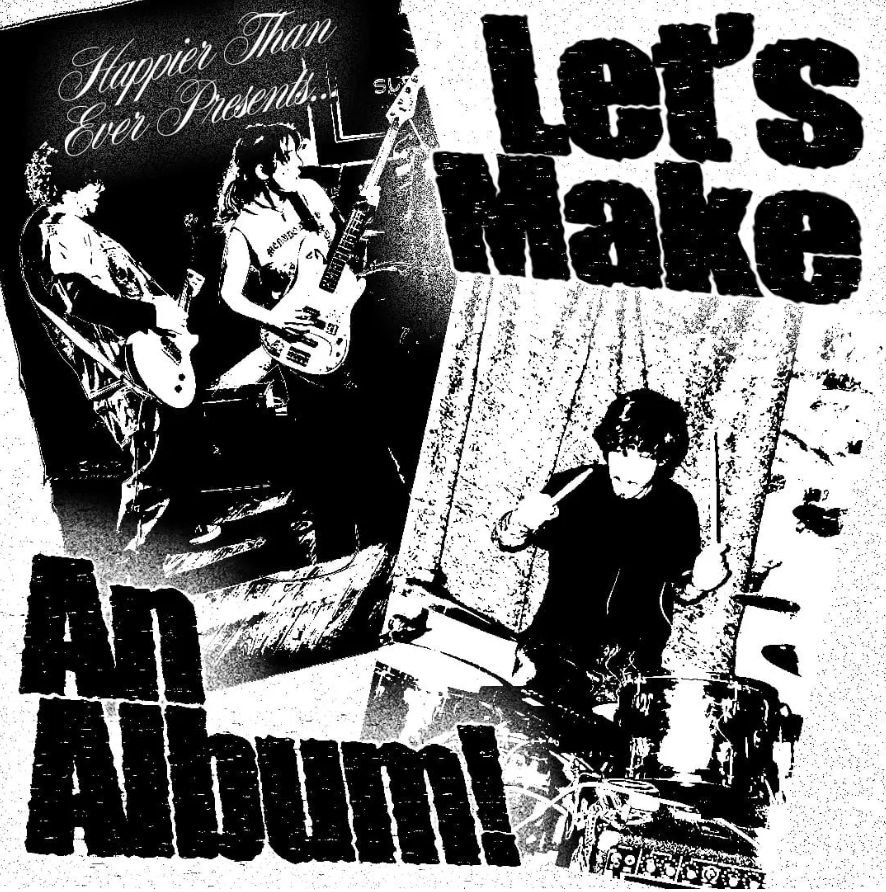
Let’s Make an Album!
Happier Than Ever; $25, PWC Available; Run Concluded
Through the proliferation of social media, the line between artist and audience has been getting closer and closer over recent years. Audiences feel like they know the band members as we join them online while they are on tour. We hear insights into the song writing process, and jam with them through reels and .
The three piece band Happier Than Ever are taking this relationship even further through their aptly titled show, Let’s Make an Album. With an unrelenting one hour countdown on screen, the band works with the audience to write a brand new song. Taking initial suggestions via Google Form, a random number generator then picks out the genre, topic, and “key phrase” for our song — although we as an audience are given three vetos to change up our choices throughout the evening. The song we collectively created on our evening is a “Punk Pop” inspired message about “resisting” entitled “grain of sand”.
The lead man, guitarist and vocalist Jaden Alvaro Gines is a fantastic compere and composer, interacting with the audience in a witty fast paced manner, while also quickly adapting our suggestions into the lyrics and musical phrases of our catchy little song. Once we determine the source of our resistance (against fascism), the lyrics for our verse quickly come from the audience, as we both “yes and” and “one up” each other with alliteration and witticisms. The feeling in the room is of a garage band jam session, with healthy debate and deliberation through the audience as we combine our creative energy to unite in one song. The differences in the audience, age, race, gender, help to create a diverse voice, which helps to make this a unified message — and catchy tune. While there are clearly some high school rock band alumni in the audience who have experience in writing a new song, I am confident that for others this may have been the first opportunity they have had to be in the creative process. What a gift this theatrical piece offers to those wanna-be rock stars to allow them to be a part of this unique pastime. Unlike with musical improv show, this show allows thrives on revision and refining, and brings about a thrilling conclusion to our time together as the hour countdown inevitably comes to a close — just as we finish a playthrough of our Verse, Prechorus, Chorus, Verse, Bridge, Chorus bop!
The next step for the show, is that post-fringe the band will actually record all of the songs that were created over the course of this run, and audiences will receive the links and downloads in the near future. What a marvelous take away from this experience. I am really looking forward to listening to our spirited song of resistance, and hearing what the other performances came up with. Interactivity was key to this piece, and I applaud the band for their openness and willingness to collaborate with a whole room of strangers, inviting us into the sacred space of creation with them. Maybe this show will inspire people to create in their own time, but it will certainly have them wanting to join the band again sometime soon.
— Edward Mylechreest
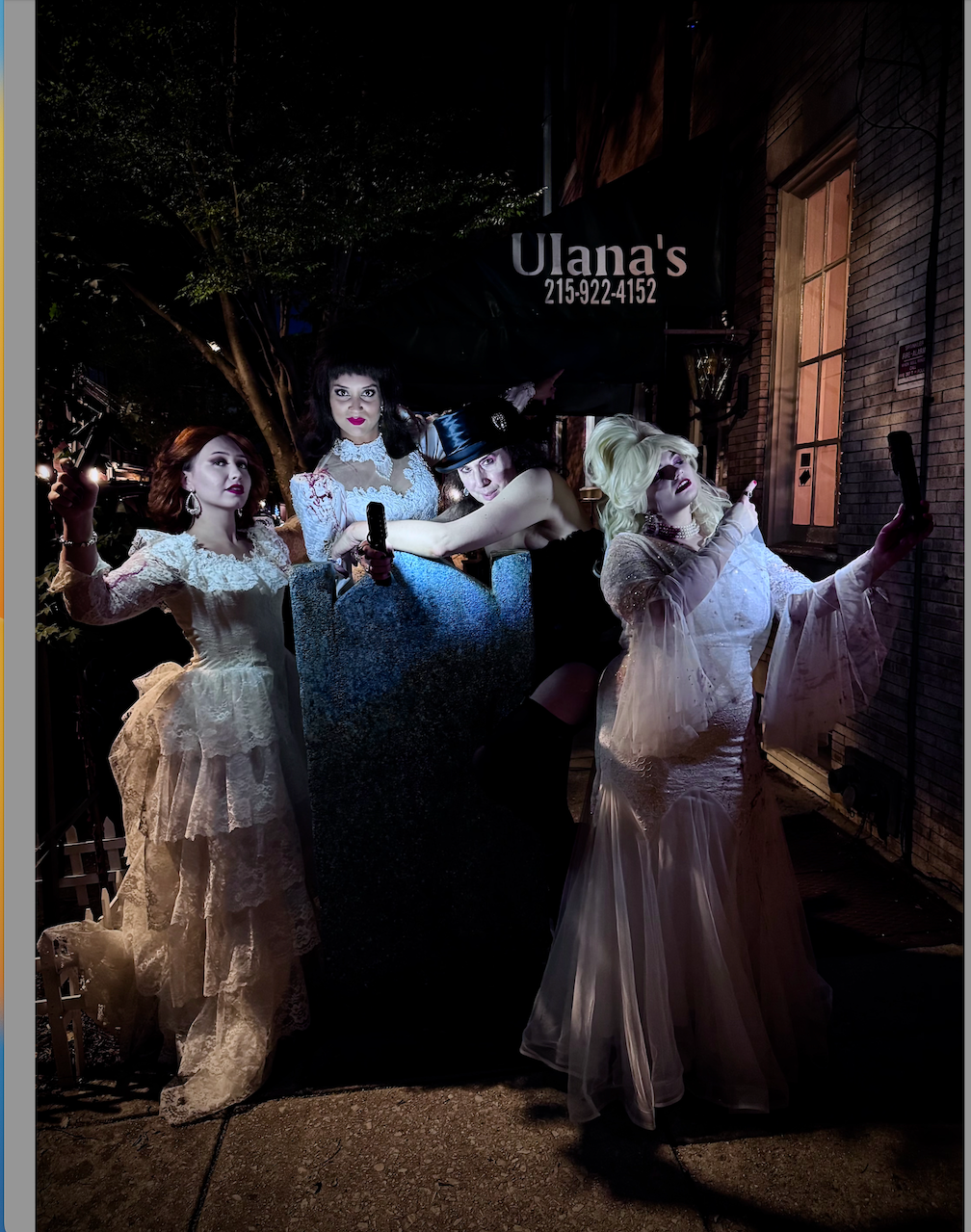
KISS ME DEADLY — A BLOODY BRILLIANT VAMPIRE CABARET
REV Theater Company; $35; Run Concluded
REV theatre company is always a highlight of Fringe, and this year’s KISS ME DEADLY is no exception. A revised version of 2024’s My Big Fang Vampire Wedding, the show changes up the set list and staging, but overall is a tighter package. Yes, the audience is still lightly sexually harassed by a randy Dracula (who can easily be warded off with your fingers in the sign of the cross), but the tone is less sleazy club than Rocky Horror, complete with a crawling dance that seemed an homage to the film’s choreography.
The live band is spectacular, and the singer’s incredibly talented both vocally and in figuring out what audience members will be game to play along. Finding its immersion in enveloping the audience in the chaos of the proceedings and light interaction, it’s shockingly a great intro to immersive for older audiences, who by and large loved the set list and were the most willing participants of the evening. If I had any complaint, it would be the continued use of handheld lighting and microphones that has encumbered performers since my first REV production, limiting choreography for some numbers.
REV continues to produce some of the most fun cabaret in Philadelphia. I eagerly await their upcoming production of the musical Cabaret, and encourage all theatergoers to give them a try. Don’t worry, they don’t bite…unless you ask nicely.
— Blake Weil
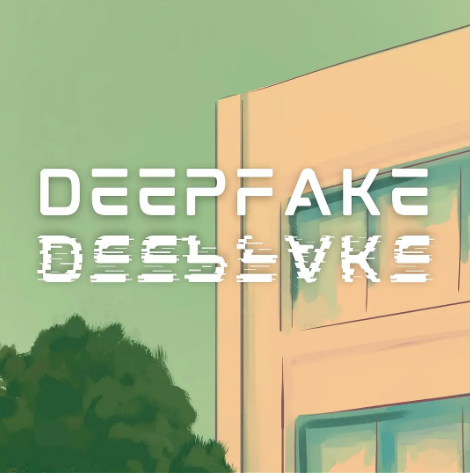
Deepfake
404 Theater; $10; Run Concluded
Review contains moderate spoilers for Deepfake
There’s a certain “Dead Dove; Do Not Eat” quality to Deepfake, and that’s not necessarily a bad thing. It’s a show about deepfakes, someone will be a deepfake. And yet, despite the bracing for impact the audience goes in with, much like our baseline knowledge of AI, it is ultimately so much more repulsive a reveal than we expected that everyone I know left shuddering and miserable. By that, I mean everyone in America should see Deepfake. Required viewing, period.
Audience members are cast as the PR head of an AI startup about to launch new consumer facing deepfake technology. You take a quick Zoom call, make polite office small talk, and peruse reference materials before making a call to the CEO on whether or not to launch the tech. Of course some sort of deepfake malfeasance will complicate this, it’s a drama, not a lecture. The fact that the deepfake malfeasance is perpetrated against the audience is what creates a bridge of empathy for an (at this point) rare experience.
Being interrupted by a perfect AI replica of myself, down to mannerisms, contradicting everything I said, was utterly infuriating. I vibrated with rage for about five minutes, before sort of giddily cackling on my long walk home about the simplicity of the piece. The construct of Deepfake is so clean, so without fluff, that it is blisteringly effective. My first calls after the show were to my mother and my boyfriend, insisting that we have protocols for ID verification for any requests through digital channels. I went from an ambient fear of Deepfake tech to believing it to be one of the most pressing issues of our time.
Is there anything I can do about this, other than contact legislators? Probably not, other than attempts to warn friends and family and keep my own digital existence safe. However, I urge 404 Theater Company, in no uncertain terms, to bring this show as a demo to legislators. Deepfake makes the urgency of evolving AI tech personal and tangible, and as such, is one of the heights of this fringe season.
— Blake Weil
Discover the latest immersive events, festivals, workshops, and more at our new site EVERYTHING IMMERSIVE, home of NoPro’s show listings.
NoPro is a labor of love made possible by our generous Patreon backers. Join them today and get access to our Newsletter and Discord! You can also GIFT memberships.
In addition to the No Proscenium website and our podcast, and you can find NoPro on Bluesky, Facebook, LinkedIn, YouTube, Instagram, and in the Facebook community also named Everything Immersive.